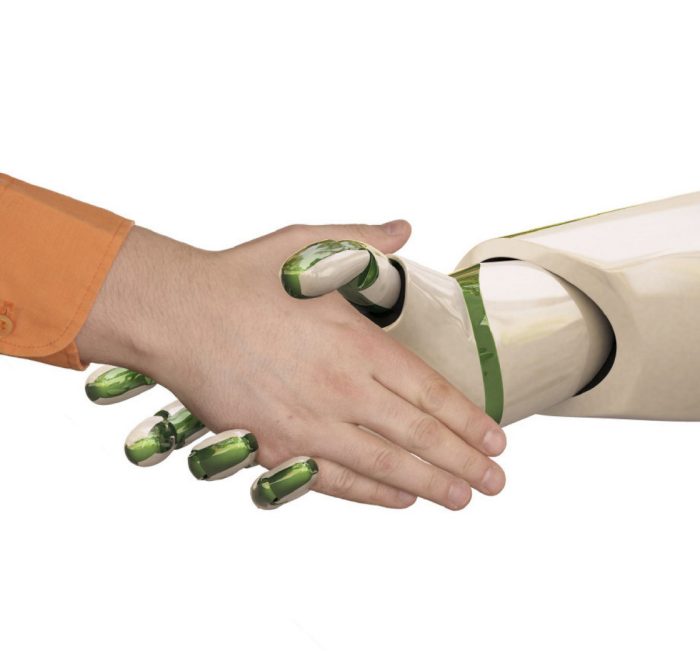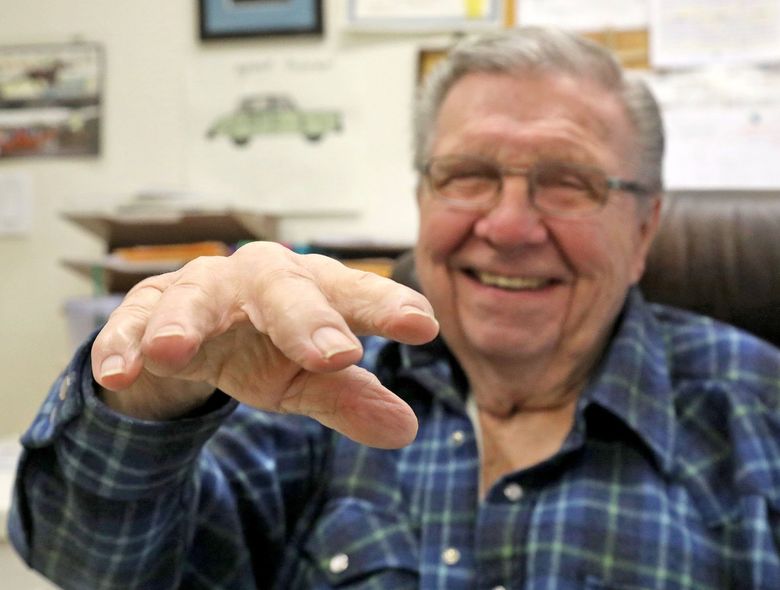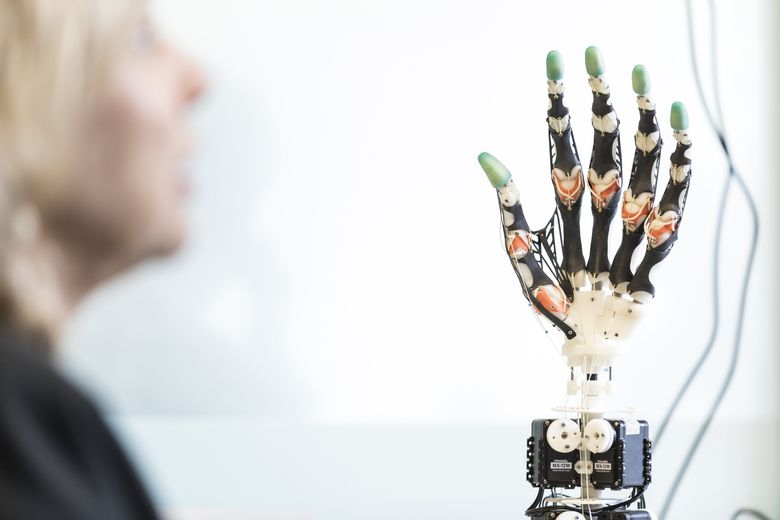
Brain Implant Works to Control Shaky Hands
The University of Washington Medical Center has developed two technologies to help people debilitated by missing hands or shaky hands.
Hand tremors which make almost everything difficult to do, are caused by Parkinson’s disease, Alzheimer’s, an accident or a nerve disorder. Often the tremors progress past the point of being manageable. The University Of Washington may have solved the cause with a new brain implant. The Seattle Times revealed an experimental procedure that has shown great promise for people with tremors.
Fred Foy’s hands used to shake and tremble uncontrollably from a nerve disorder known as essential tremor, making it hard for him to do the simplest tasks — from signing his name to eating with utensils. So in November 2016, he went through experimental surgery at the University of Washington Medical Center to fix the tremors with a device implanted in his brain.The fix was pioneered by the University of Washington’s Center for Sensorimotor Neural Engineering (CSNE), which conducts cutting-edge research that aims to create an interface between the brain and computers.

Fred Foy demonstrates his steady hand after surgery.
The CSNE has been tasked with allowing people who have been paralyzed by injury or stroke to move their limbs again. The Center was established in 2011 and given a $40 million federal grant from the National Science Foundation.
Fred Foy’s hands used to shake and tremble uncontrollably from a nerve disorder known as essential tremor, making it hard for him to do the simplest tasks — from signing his name to eating with utensils.
“It’s working great,” said the 82-year-old Foy, of Maple Valley, who still works as a manager of the apartments he built when he was a younger man. “It’s a miracle. I can eat now — I can do things with my right hand that I couldn’t do before.”
Now, he goes to the UW every month to participate in research on how the device is working for him. He had the surgery to fix the tremors in his right hand; his left hand still trembles, and he also walks with a cane.
“I’m happy to help — anything I can do to advance the science,” he said.
You can find more on Fred’s progress at seattletimes.
More Helping Hands
The University of Washington has begun to spin out start-up companies that use their technologies.
One of the startups, Embotic Technology, has developed a robotic hand that mimics a human hand. The hand was created by Zhe Xu, who graduated from UW’s computer science and engineering program in 2016 and is working on a Ph.D. So by keeping the funds in-house for their students UW has a jump on its competition. An example, the hand that Zhe Xu created on campus:
“…has a wide variety of potential applications, including robotic manipulation research, medical education and space exploration. It could be used in humanoid robotics, adopted as part of an advanced prosthetic, and used in rescue and military applications. It could even be used in animatronics — lifelike robots — in the movie/entertainment industry.”
Xu, who calls his robotic hands “avatars,” said the technology makes it possible to create them for anyone. “Suddenly, you feel like you’re controlling yourself remotely,” Xu said.
You can read more about this amazing hand in seattletimes.com

XU’s robotic hand invention will be available eventually for patients.







Leave A Comment